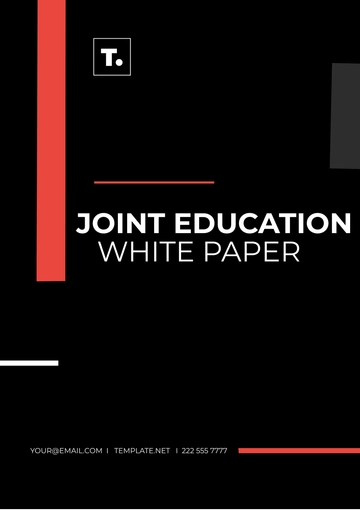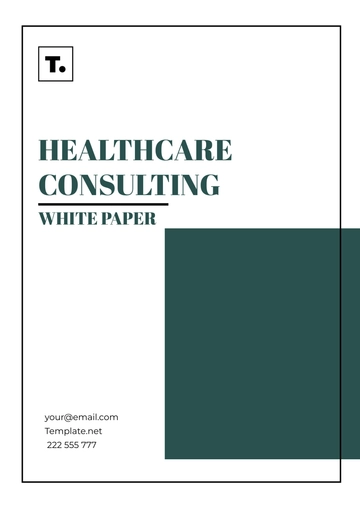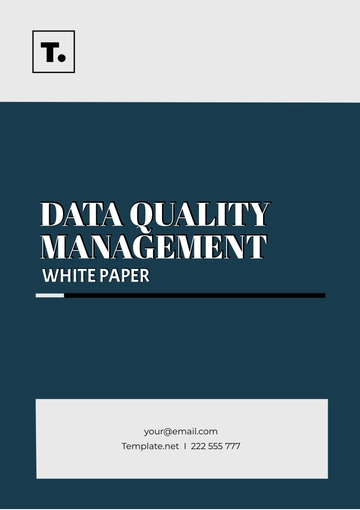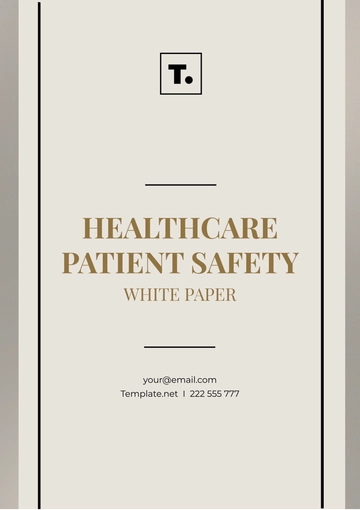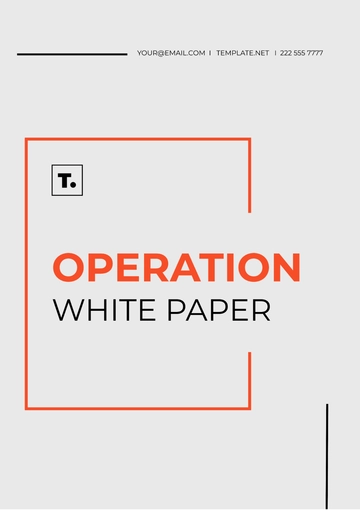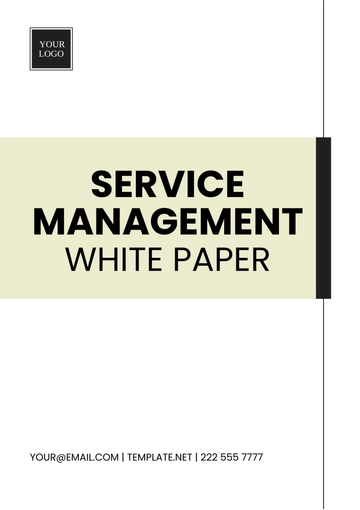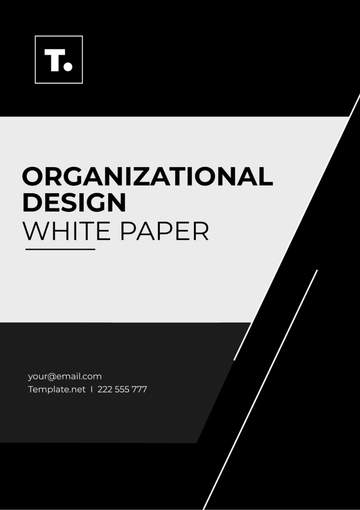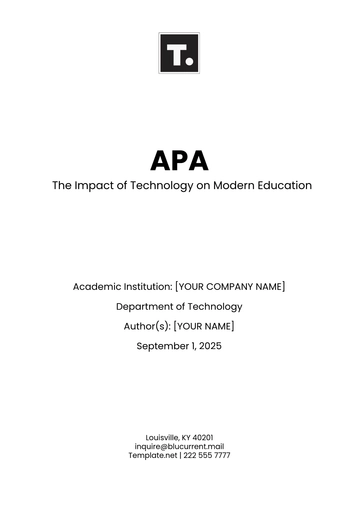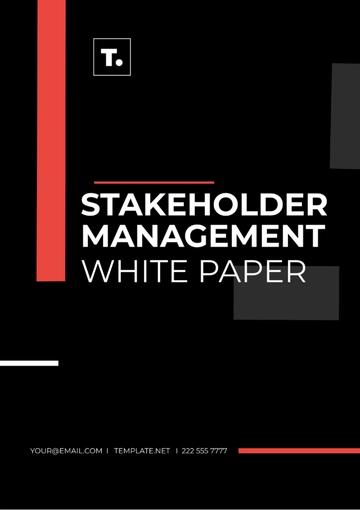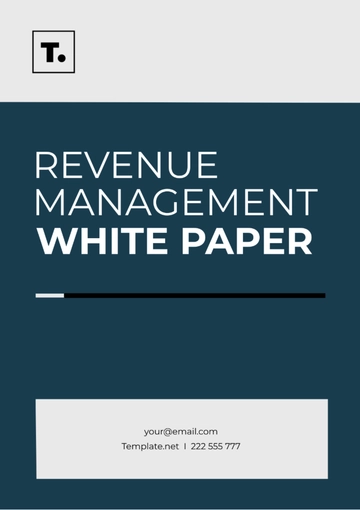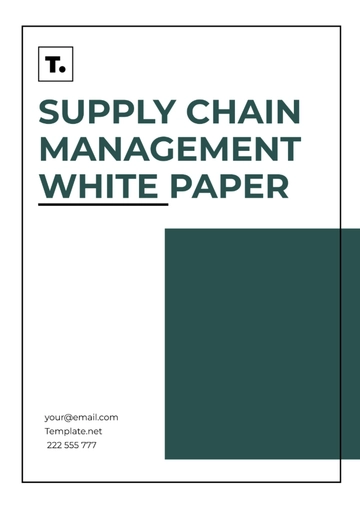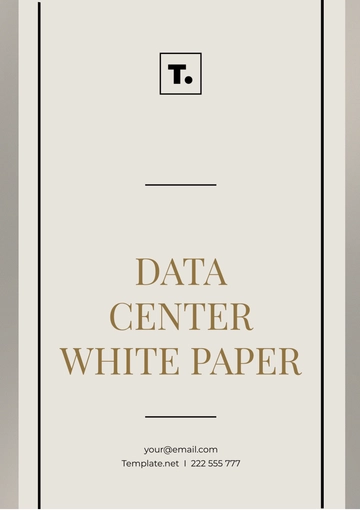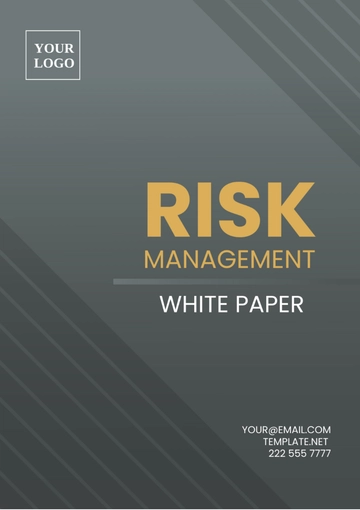Free Financial Security White Paper
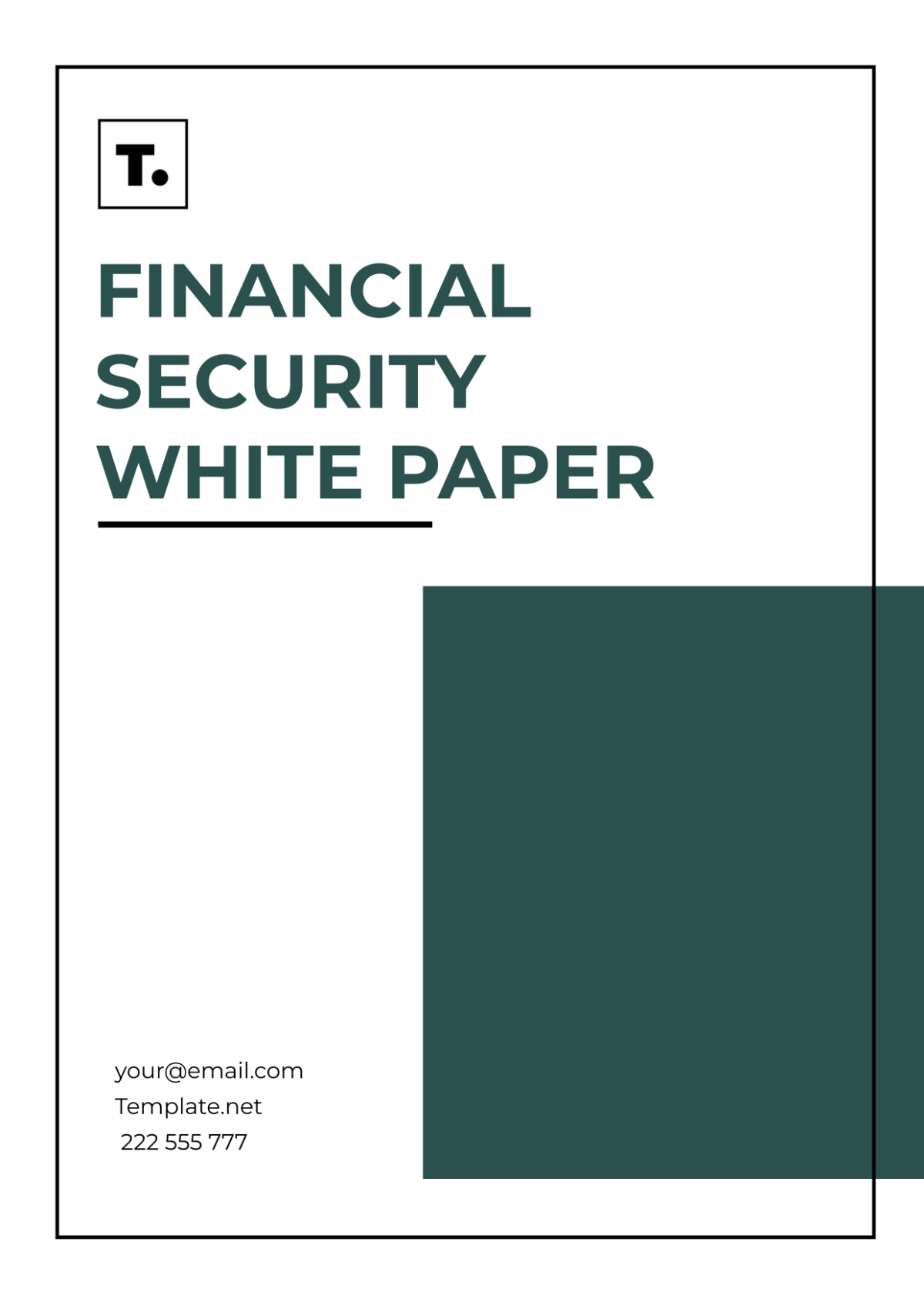
Author: [YOUR NAME]
Company: [YOUR COMPANY NAME]
Date: [DATE]
I. Introduction
In an increasingly interconnected world, ensuring the financial security of [Your Company Name]'s assets and sensitive information is paramount. This white paper examines the current landscape of financial security threats and provides actionable strategies to mitigate risks and safeguard your organization's financial well-being.
II. Identifying Financial Risks
Before implementing security measures, it's essential to identify and understand the various financial risks that [Your Company Name] may face.
A. Cybersecurity Threats
Assess vulnerabilities in your IT infrastructure, including networks, systems, and applications, to protect against cyberattacks such as malware, ransomware, and phishing.
Implement robust cybersecurity protocols, including firewalls, encryption, multi-factor authentication (MFA), and regular security audits, to mitigate the risk of data breaches and unauthorized access.
B. Fraudulent Activities
Educate employees about common types of financial fraud, such as invoice fraud, CEO impersonation scams, and insider threats, to enhance awareness and vigilance.
Implement internal controls and monitoring mechanisms to detect and prevent fraudulent activities, such as segregation of duties, transaction monitoring, and whistleblower hotlines.
III. Establishing Security Policies and Procedures

To effectively mitigate financial risks, [Your Company Name] should establish comprehensive security policies and procedures that govern its financial operations.
A. Policy Development
Develop clear and concise policies outlining acceptable use of financial systems and data, password management guidelines, and incident response protocols.
Ensure policies are regularly reviewed and updated to address emerging threats and regulatory requirements effectively.
B. Employee Training and Awareness
Provide comprehensive training programs to educate employees about financial security best practices, including how to recognize and respond to security incidents promptly.
Foster a culture of security awareness by promoting open communication, encouraging reporting of suspicious activities, and rewarding compliance with security policies.
IV. Compliance and Regulatory Requirements
Compliance with relevant financial regulations and industry standards is essential to avoid legal repercussions and maintain the trust of stakeholders.
A. Regulatory Compliance
Stay abreast of evolving financial regulations, such as the Sarbanes-Oxley Act (SOX), Payment Card Industry Data Security Standard (PCI DSS), and General Data Protection Regulation (GDPR), to ensure [Your Company Name] remains compliant.
Conduct regular audits and assessments to verify adherence to regulatory requirements and address any non-compliance issues promptly.
B. Industry Standards
Align security practices with industry best practices and standards, such as the ISO/IEC 27001 framework for information security management, to demonstrate [Your Company Name]'s commitment to safeguarding financial assets and data.
Participate in industry forums and collaborate with peers to share insights and learn from others' experiences in managing financial security risks.
V. Continuous Monitoring and Improvement

Financial security is an ongoing process that requires continuous monitoring, assessment, and improvement to adapt to evolving threats and business needs.
A. Security Incident Response
Develop a robust incident response plan that outlines roles, responsibilities, and escalation procedures for addressing security incidents promptly and effectively.
Conduct post-incident reviews to identify lessons learned and implement corrective actions to prevent similar incidents in the future.
B. Security Awareness Programs
Regularly reinforce security awareness through training sessions, simulated phishing exercises, and awareness campaigns to ensure employees remain vigilant and proactive in protecting [Your Company Name]'s financial interests.
Encourage feedback from employees and stakeholders to identify areas for improvement and innovation in [Your Company Name]'s financial security practices.
VI. Conclusion
By prioritizing financial security and implementing the strategies outlined in this white paper, [Your Company Name] can mitigate risks, protect assets, and maintain the trust and confidence of its stakeholders. Remember, financial security is not a one-time effort but an ongoing commitment that requires diligence, vigilance, and collaboration across the organization.
VII. References
Cybersecurity and Infrastructure Security Agency. (2022). "Best Practices for Preventing Cybersecurity Threats." Retrieved from www.cisa.gov/cybersecurity-best-practices.
International Organization for Standardization. (2020). "ISO/IEC 27001: Information Security Management Systems - Requirements." Geneva: ISO.
Ponemon Institute. (2021). "Cost of Data Breach Report." Retrieved from www.ponemon.org/research/ponemon-cost-of-data-breach-study.
- 100% Customizable, free editor
- Access 1 Million+ Templates, photo’s & graphics
- Download or share as a template
- Click and replace photos, graphics, text, backgrounds
- Resize, crop, AI write & more
- Access advanced editor
Safeguard your financial endeavors with our Financial Security White Paper Template, meticulously designed to convey trust and reliability. Tailored for financial institutions, it offers a seamless blend of information and professionalism. Customizable and downloadable, this template, offered by Template.net, ensures your data is presented with clarity and authority. Editable in our AI Editor Tool, transform complex financial concepts into accessible documents, ready for print and distribution.
